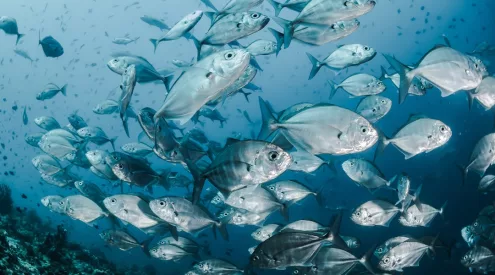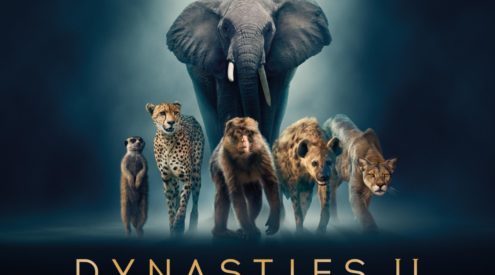Cheetahs greet by rubbing against you and purring loudly. It’s a deep, throaty rumble that leaves you with a warm, fuzzy feeling and in no doubt that you’re accepted.
A cheetah at speed, though, has more in common with a bird than a purring beast. Long before a speckled cat hits its top-speed burst (they’ve been logged at 120 kilometres an hour) its stride is in excess of eight metres and it seems to touch the ground so briefly as to appear permanently airborne.
This became clear to me as I tried to keep a hurtling cat in the viewfinder of a high-speed camera at Cheetah Outreach near Stellenbosch. To exercise their ‘cheetah ambassadors’ they use a moving cord on pulleys, which whips a favourite toy around a large enclosure. When it moves, the cheetah’s chase instinct kicks in and off they go.
‘It’s both exercise and a game for them,’ said Dawn Glover, who’s spent the past 15 years working with the cats at Outreach. ‘It’s thrilling to watch a cheetah at speed. See how they use their tail for turning? It’s long, deep and flat, like a rudder. And the way they use their backs to accelerate…’ The cat we were watching blurred past and then, deciding the toy wasn’t going to be caught, bounced to a halt and sauntered up a mound to sit and look utterly regal.
In evolutionary terms, its presence is an enigma. In the business of survival of the fittest, its line should have disappeared into species oblivion ages ago. Cheetahs are non-aggressive and will retreat rather than defend their catch. They have small jaws and a weak bite. Out on the savanna their cubs are heavily predated, with fewer than five per cent reaching adulthood.
While sprinting, they overheat in mere seconds and take more than half an hour to recover from a burst of speed. In a chase, their breathing rate shoots from 16 breaths a minute to nearly 160. Unlike other cats, their claws are blunt and no good for climbing trees to escape danger. They’ve sacrificed muscle mass for leanness like any good sprinter. And instead of a hearty roar, they cheep like a bird.
But the most astounding feature of all is their skeleton. If it wasn’t on four-legs you’d think you were looking at the bones of a bird. They’re long, frighteningly thin and clearly fragile.
Yet genetically cheetahs are the oldest of the cat family – perfect in their savanna niche and unchanged for around three million years. They’ve outlived ice ages and sabre-toothed cats. Their narrow waist, long legs, deep chest, large nostrils, enlarged heart and lungs, special pads for traction and long tail for balance are all designed around the one thing that has given them an evolutionary advantage: speed.
‘They can get to 80 kilometres an hour in three seconds,’ said Dawn as we headed for another enclosure to feed 12-year-old Joe. ‘A lion’s success rate in hunting is between 10 and 20 per cent. For a cheetah it’s around 50 per cent. They’re magnificent stalkers so they get close to prey. Then with a burst of speed they trip it and crush its windpipe. Elegant, quick, efficient and thrilling to watch.’
Human fascination with cheetahs goes back a long way. Early humans probably scavanged their kills. They were worshipped in Egypt and thought to be escorts for pharaohs into the afterlife (Cleopatra is said to have had more than 1 000 of the big cats). In the 16th century, Mughal emperor Akbar of India kept hundreds for hunting (the cheetah’s name comes from a Sanskrit word which means ‘spotted one’) as did royalty in Russia in the Middle Ages and France in the 1100s. Their association with humans is thought to be longer than that of house cats and almost the same as dogs.
This hasn’t saved them in the modern world. There are presently only about 7 500 adult cheetahs in the wild (fewer than a thousand in South Africa) and some 1 000 in captivity. Their numbers are declining and they’re listed as threatened.
‘The problem is a captive-bred cheetah can’t survive in the wild,’ said Dawn. ‘The females are very fussy about mating and it takes two years for them to teach their cubs how to hunt and avoid predators. You can’t put a pair in a pen and hope they’ll breed, or expect a hand-reared cat to know how to hunt. And out there the habitat is crucial. Kruger Park’s not good because there are too many predators and on the Serengeti in Tanzania tourists often interrupt their kills. The best place for wild cheetah is Namibia, followed by Botswana and South Africa.’
The biggest cheetah population in South Africa is on farms along the country’s northern borders. But because of big stock losses, all predators are being targeted. ‘You can’t blame farmers,’ said Dawn. ‘They’re just trying to make a living. We breed Anatolian dogs and give them to farmers as a conservancy measure. They can bring down stock predation by 100 per cent.’
Hope for the future of cheetahs has to do with range conservation and reducing conflict with humans. And in this work the great champions of the spotted cat are women. In southern and central Africa, most cheetah conservation projects are run by women and most of their handlers are female. I asked Dawn why.
‘The cats are independent,’ she said. ‘You can’t dominate them or tell them what to do. You work on a relationship and build an emotional bond. It’s not like a dog, which looks to an alpha male. Men seem to prefer handling pack animals, but women are more likely to understand the emotional nature of relationships with cheetahs. When new staff are hired, the final interview is by the cheetahs, not management. And most of our volunteers and staff are women.
‘It’s always the same: the cat accepts you, you fall for it and the bond changes you forever. Few people who’ve worked with cheetahs can ever leave them. It’s a life calling.’
















